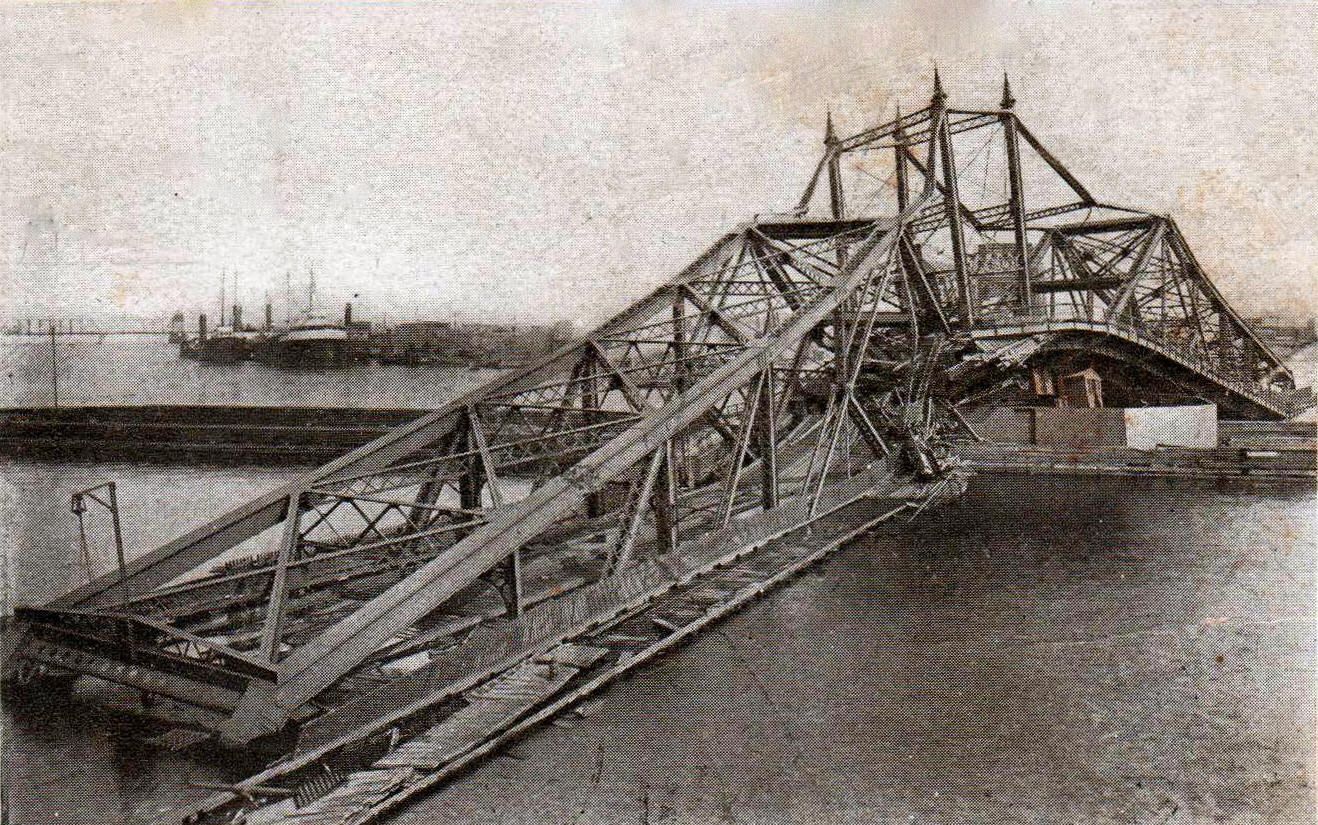View an article regarding the barge crash into this bridge.
This unique bridge was the only crossing of the Great Northern across the St. Louis River at Duluth.
In 1894, the Duluth-Superior Bridge Company was founded and funded by St. Paul, Minneapolis & Manitoba Railway Company to build a multi use bridge across the harbor. Prior to this, all rail traffic had to use the Northern Pacific bridge.
The bridge was finally opened to two rail tracks and wagon traffic on July 13th 1897, nearly 3 years after first construction began. The bridge was designed by A.P. Boller, with steel work fabricated by the Pennsylvania Steel Company.
The bridge was configured with a long trestle approach on either side, a 301' Parker Through Truss on the Minnesota side and a 491' swing span, the largest in the world at the time. On the Wisconsin side, the bridge featured an identical truss.

Blueprints of the bridge, from The Railroad Gazette, Volume 29
On August 11th 1906, a steamboat struck the center span, collapsing it. Because of the obstruction to navigation, the Wisconsin approach span was removed while the swing span was rebuilt.
Oddly enough, the replacement swing span appears to have been identical to the collapsed span. It is unknown if the materials from the original swing span were reused, or if identical castings were created.
In 1926, the US Highway System was established. As a result, US-53 was routed over this bridge on wagon decks, and the bridge was operated as a toll bridge.
When the Interstate Highway System was authorized in 1956, a replacement span was authorized. I-35 as well as its axillary route, I-535, were planned to be constructed in the Twin Ports area.
The replacement for the Interstate Bridge was the I-535 High Bridge, now known as the John A. Blatnik Bridge. It opened in 1961, and plans are currently being made to replace the Blatnik Bridge.

Wreck of the bridge in 1906, from The Railroad Gazette, Volume 41
Shortly after the completion of the new bridge, the Interstate Bridge closed and was bolted in open position as soon as 1962. Actual demolition commenced in 1971.
Today, only the railroad trestle approach and the parker truss span exist on the Minnesota side, along with some stones on the Wisconsin shore.
As a result, the author has ranked this bridge as being moderately significant, due to the loss of the original spans. However, it is fortunate that portions of the bridge still exist.
These remains serve as a fishing pier, and observation deck. The photo above is looking from under the Blatnik Bridge towards the bridge.
11/21/21
| Upstream | St. Louis Bay Bridge |
| Downstream | Confluence into Lake Superior |
